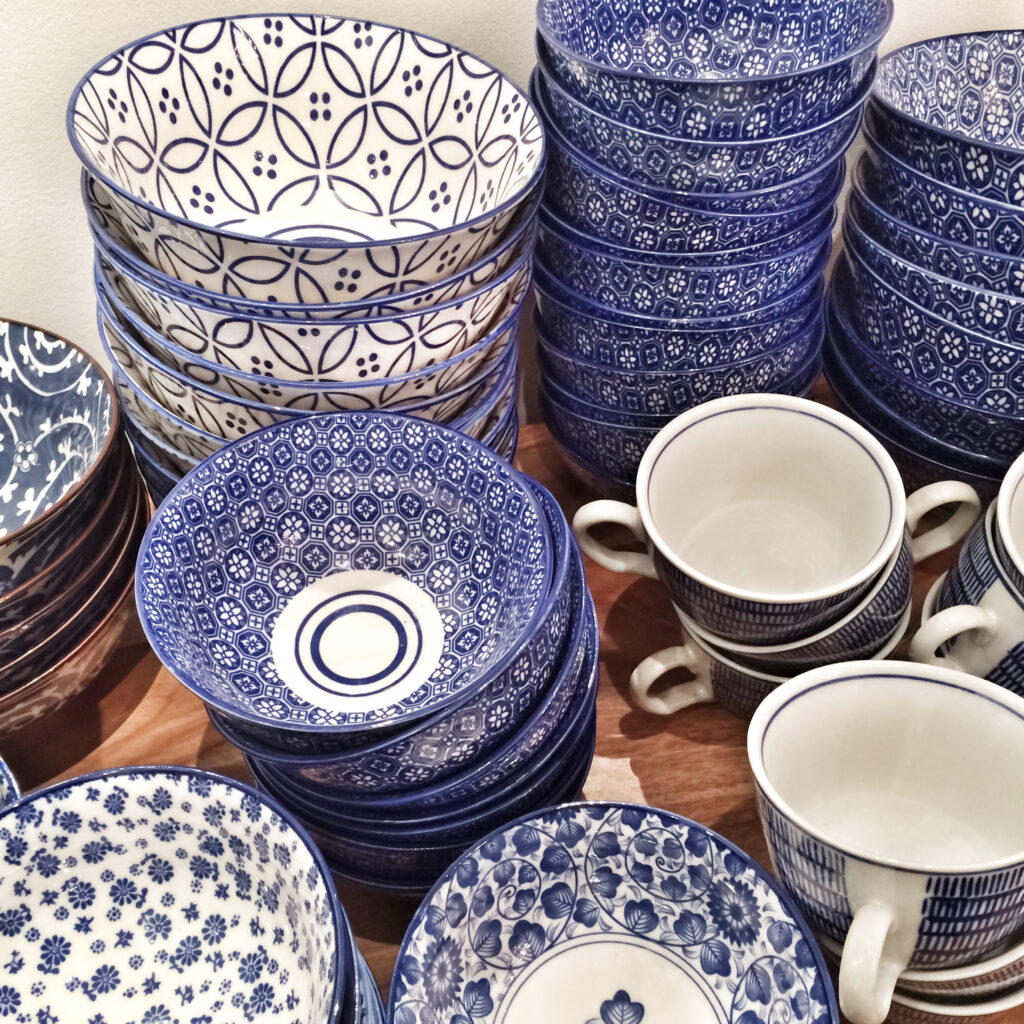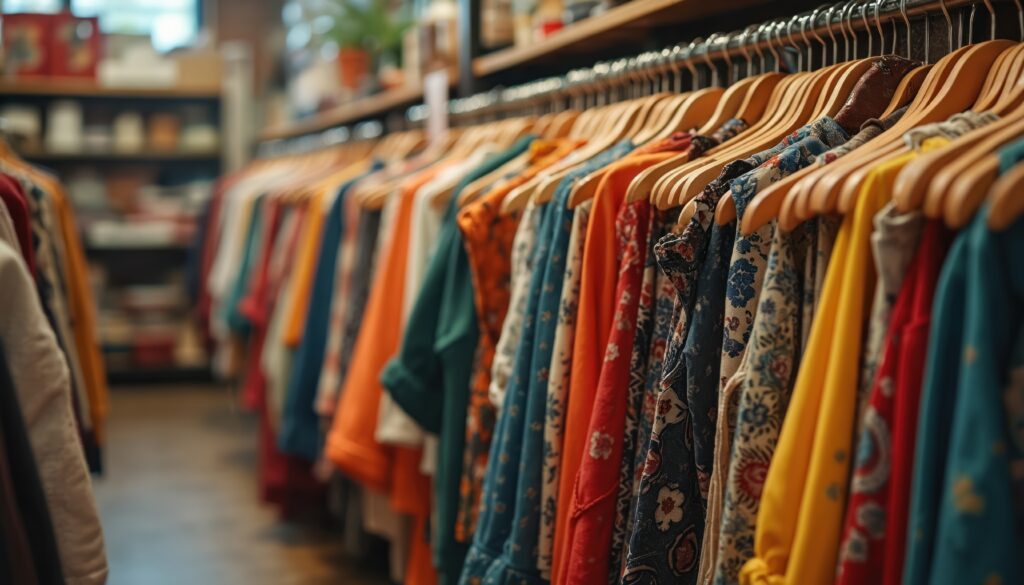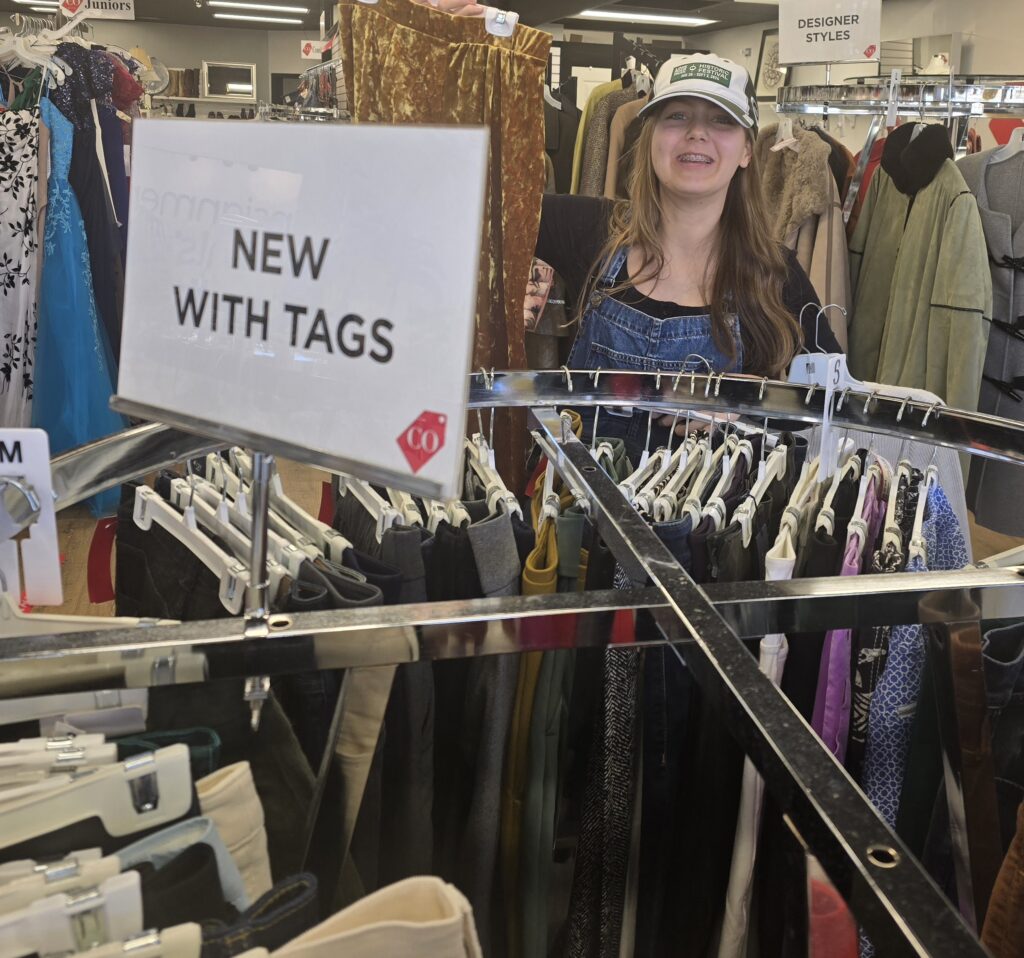

I am a bit of a germaphobe but at the same time I love bargains!
It has always been with mixed feelings that I approach secondhand shops. In terms of clothing, I think without realizing it, I had only ever shopped at thrift shops and not until recently experienced the wonders of consignment shops. For household furnishings, I must admit, I have been pretty addicted to vintage for a long time. I would rather reupholster something than buy brand new!
Vintage is missing that new car smell!
My husband and I started making the full transition to vintage when I was pregnant. As future parents, we made a mutual commitment to lower our child’s exposure to everything chemical in the world. That meant we looked at pesticides and additives in foods, clothing applied with fire retardant or other chemicals during the dying and production stages, household goods made with things like formaldehyde, and any other potential exposures from chemical off-gassing. Once you connect that “new car smell” with the fact that what you are actually smelling is the off-gassing of chemicals, then secondhand shopping starts to jump to the top of the choices!
So maybe furniture and household goods are an easy leap. And transitioning to hand-me-down clothes, especially coming from the mindset that we had, was an easy process too. It is that last bit that I could not commit to. I was not shopping for my daughter’s clothes in a secondhand shop. It would have been so great if I had been open to it back then. I was at least, happily a part of a neighborhood downline. I received hand-me-downs for my daughter and then continued to pass things down to the next person once my daughter outgrew them.
Was I being a snob because I avoided shopping for secondhand clothes?
One of the barriers for me to shop secondhand, and the thing that may come to mind when you think about shopping for used clothing, furniture, and household goods, is quite honestly – smell. But not everything smells! In fact you would be hard pressed to tell the difference between new and used in some of the consignment and vintage stores that I have shopped in. Certainly, if I were doing it all over again today, I would be scouring the secondhand shops for all the children’s clothing and supplies that we needed. As a side note, of course there are some things that should not be bought secondhand like car seats and bicycle helmets, but I could have really reduced my environmental impact had I been a bit more open when my daughter was younger. Kids outgrow their clothes, books and toys quickly so using something just for the fleeting period that we needed it and then passing it on would have been so much more ideal!
Besides the off-gassing, what about the environmental impact?
We have not even begun to scratch the surface on the environmental impact of reusing furniture and the like. The fact is, we all need to use less so that less needs to be produced. That is a grand way for us all to affect our personal carbon footprint positively and head towards a climate neutral lifestyle.
The 6 r’s are being taught in schools now so at least the next generation of shoppers is being impacted by; reduce, reuse, recycle, rethink, refuse, and repair. My generation – at least from my perspective – thinks that recycling is a good deed. In this list of six, recycling should really be the absolute last resort. At some point we must get to a place where recycling is no longer a part of this list. Rethinking, reusing, repairing, and refusing are such better solutions. Why? Well, because recycling means that something must still be produced.
Think of every step in the process of creating any item, the entire lifespan, and end of life of the product. Every part of the cycle creates greenhouse gas emissions. Even when (if) it is recycled, it has made a larger footprint than if a new product was not made. The recycling process itself creates greenhouse gas emissions. So, the best, absolute best, solution is to never have to make that new product to begin with!
Implement the rethink, reuse, repair all by going shopping!
Hmm! That sounds fun! What better way to adopt these concepts than to go shopping! Of course, I am referring to secondhand, consignment, vintage, thrift, and/or antique shopping! Secondhand shopping increases the economy while saving you money! According to capitaloneshopping.com, the average secondhand shopper can save about $1,800 annually and the economy gets fed by an industry that generated $53 billion in revenue in 2023.
How do I get started you ask!
You may totally be down with the difference, or perhaps you are like me and have equated, for example consignment and thrift as the same experience. They are not! And while both can be right for some, others specifically prefer one to the other. And, for people like me, consignment shops are the perfect fit. I have a dear friend who goes to the thrift store outlet shop. She wears gloves while sifting through bins of extremely discounted clothing. That is a hard no for me! But she is totally okay with it and enjoys the bargains that she literally uncovers! So, knowing what is what, is important to make sure you shop at a place that fulfills your shopping desires while doing good for the world!
Now, just in case you are not familiar with the differences. Here are the basic generalizations that describe these different shopping options.
- Consignment stores sell items on behalf of others. In most cases these stores only accept quality seasonal items, pre-laundered, and in excellent condition. Some consignment stores take only specific brands and items must be in a “like new” condition. If you have items at your house that fit the bill, find your local consignment shop, and check out their rules for drop-off and their policies regarding commission. Yep, you read right! You can earn a commission by partnering with a consignment shop.
- Thrift stores tend to be nonprofit. Two very well-known examples are Goodwill and Salvation Army. These stores rely on donations to stock their shelves and use revenue from sales to fund charitable causes. You will find a wide variety of items from clothing to household goods, books and even furniture. You can usually drop off donations to your local thrift store in a less formal setting than in a consignment store. My local Goodwill has a drive through donation area.
- Vintage shopping describes an item that is at least 20 years old but less than one hundred years old. It may represent a fashion trend or historical style. We have a few quaint small towns that are lined with vintage shops that carry everything from clothes to household wares, old trunks, and more.
- Antique shopping covers items that are over one hundred years old. Antique can mean a bit more expensive. Items might be rarer and therefore marked up in price to represent the lack of supply.
When you are looking to begin or expand your horizons on secondhand shopping do not forget to check out online marketplaces and “buy nothing” groups. There are so many cost-effective ways to shop for what you want while you also get the good vibes of making a positive impact on the world!
Happy shopping!


Leave a Reply